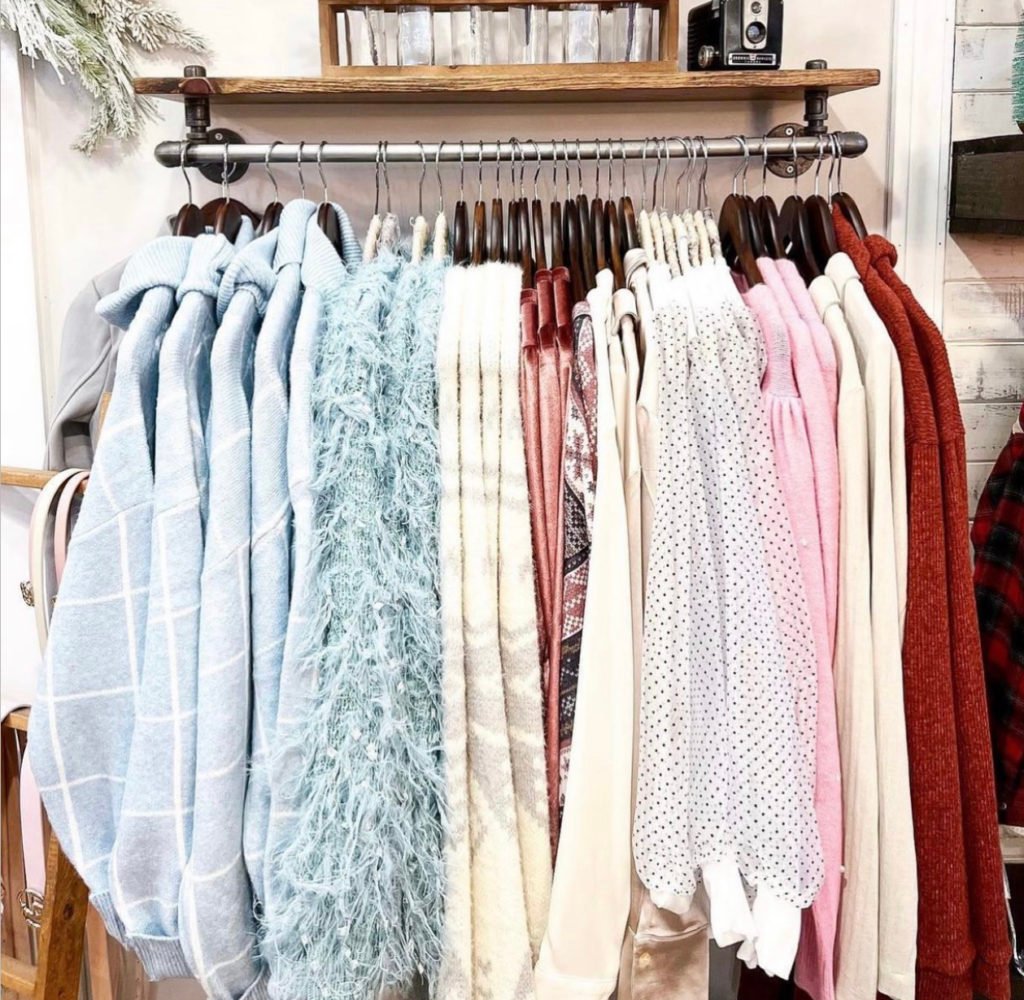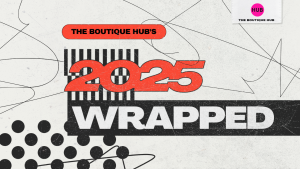After all the holiday markdowns you may be asking the question, “What do I do with all my leftover winter stuff… I want to make room for spring goods!” Let’s go over the best plan of action on how to get rid of your winter inventory.
So many things go into markdown strategies so please note every store is unique. We often see a lot of orders arriving at your stores late or past expected delivery dates.
If you accepted those goods into your store to make holiday sales but didn’t sell through as many as you’d hoped, perhaps you are sitting on a large volume of goods that are just taking up space in your store right now. Some of these goods still have value and can live on your hangers for a while yet as “transition” pieces. Others, however, are starting to grow on the hanger or are very “WINTERY” and your customers just aren’t showing interest.

This is an example of how aggressive vs. relaxed markdowns can make a difference with this type of inventory.
Keep in mind that Time is $$ and the longer it takes you to move a product the more money you have tied up in the product.
Let’s look at the difference between aggressive markdowns and 30, 60, 90, & 120-day markdowns for this situation.
Here is the scenario: Winter Sweaters
Location: St. Louis, MO. Total Investment: $1000 at cost. Markup: 3x = $3000 at retail. Arrival date: Dec. 1, 2020.
Store A:
Moves 50% of these products before Jan. 1 by selling 20% of them at FULL Price and 30% of them at 25% off.
Store B does the exact same thing.
So by January 1, 2021, both stores have profited $275 on their original $1000 Investment
They both do inventory counts on Jan. 1 and realize they still have 50% of this investment hanging on their racks.
AGGRESSIVE Store says: (STORE A)
“I need to cash NOW for spring goods. I want to create that FOM with my customers so I am going to get aggressive in my markdowns.”
NOT AGGRESSIVE Store says: (STORE B)
“I hope people still want these sweaters, we haven’t had them that long, lets sit on them a while longer.”
NOW keep in mind both stores received these goods on Dec. 1 and had to pay for them on their December credit card statement!
Aggressive store realizes that they need cash to pay that bill and buy more inventory PLUS they realize that these winter sweaters are aging due to the fact that customers are onto SPRING items.
NOT Aggressive store owner also had to pay that bill in December but is hopeful that they will still sell through all of the sweaters in time as they are in St. Louis and it will be cold for a few more months.

Jan. 1 – 7
AGGRESSIVE STORE: runs a 50% off sale and sells all remaining sweaters in an after-Christmas blow-out sale in one week! Generates an additional $750 in cash for a total Income of $2025.00 – initial $1000 investment = $1025 NET profit!
100% sell-through and cash is in the bank!
NOT AGGRESSIVE STORE:
Decides to keep the 25% off sale running through the end of January and only sells through another 10% of these sweaters. In February they decide to bump up the sale to 30% but again that only moves another 10% of the sweaters.
MARCH:
Now the sweaters are 90+ days old and the owner is thinking that March is still cold and they could still potentially sell. But now there is no money for new inventory. They think “I will sit on these sweaters for another month and try to sell them at 50% off (which w/ a 3x markup is still for-profit)” however… that 50% off sale in March only moves another 10% of the remaining sweaters. (to date Store B has generated $1860 in sales on this investment)
APRIL:
So now it is April 1, 2021, and Store B is still sitting on 20% of the sweaters that were delivered and paid for in December! April 1, 2021 “Let’s mark those down 75% and see if customers bite.” Again, the other 10% of the sweaters sell at this markdown leaving Store Owner B with 10% of their original investment still sitting, growing, and aging on their floor (or website).
MAY:
Finally, in May, Store B marks these last few sweaters down to 85% off, and they finally sell-through.
End result: Store B total income $1980-$1000 investment = $980 NET profit!
Difference between the 2 stores:
Store A was still further ahead (due to a solid pricing plan).
Store B made less money, took more time to do it, and tied up cash that could have better been invested elsewhere to make even more money!
Take away:
• Time is $ – imagine how many times you or your staff moved that merchandise?
•Imagine the energy drain that group of sweaters had on the staff and customers who kept seeing the same things month after month!
• Don’t murder the price tags!
•When it comes to Markdowns…Price it to MOVE.

Did you love the How to Get Rid of Winter Inventory blog?
Get more information just like this by joining the Hub for more training, information, and connections. www.theboutiquehub.com/join
Follow along on Instagram @theboutiquehub!
Recent Posts:
- The Boutique Hub at MAGIC NYC
 The Hub Team is heading to MAGIC New York again and we couldn’t be more excited! With over 320+ brands, you are sure to find more MAGIC in a (New York) minute!
The Hub Team is heading to MAGIC New York again and we couldn’t be more excited! With over 320+ brands, you are sure to find more MAGIC in a (New York) minute! - The Boutique Hub is Heading to PGA Orlando!
 The Boutique Hub is heading to the PGA Show in Orlando. Tapping into the fast-growing golf apparel market projected to hit $13B by 2032. Golf fashion is evolving beyond the course, creating big opportunities for boutique retailers. The Hub team will be connecting with brands, discovering new trends, and offering live education and retail audits at the event on July 28th. Boutique owners interested in athleisure, activewear, or preppy styles should consider adding golf-inspired looks to their lineup. VIP perks available through The Hub’s exclusive registration link.
The Boutique Hub is heading to the PGA Show in Orlando. Tapping into the fast-growing golf apparel market projected to hit $13B by 2032. Golf fashion is evolving beyond the course, creating big opportunities for boutique retailers. The Hub team will be connecting with brands, discovering new trends, and offering live education and retail audits at the event on July 28th. Boutique owners interested in athleisure, activewear, or preppy styles should consider adding golf-inspired looks to their lineup. VIP perks available through The Hub’s exclusive registration link. - 2025 Wrapped: The Boutique Hub Community by the Numbers
 From thousands of daily conversations to millions of podcast downloads, 2025 was a powerful year for The Boutique Hub community. This recap breaks down the biggest wins, trends, and milestones—and shows how retailers can turn that momentum into a clear plan for an even stronger year ahead.
From thousands of daily conversations to millions of podcast downloads, 2025 was a powerful year for The Boutique Hub community. This recap breaks down the biggest wins, trends, and milestones—and shows how retailers can turn that momentum into a clear plan for an even stronger year ahead.




